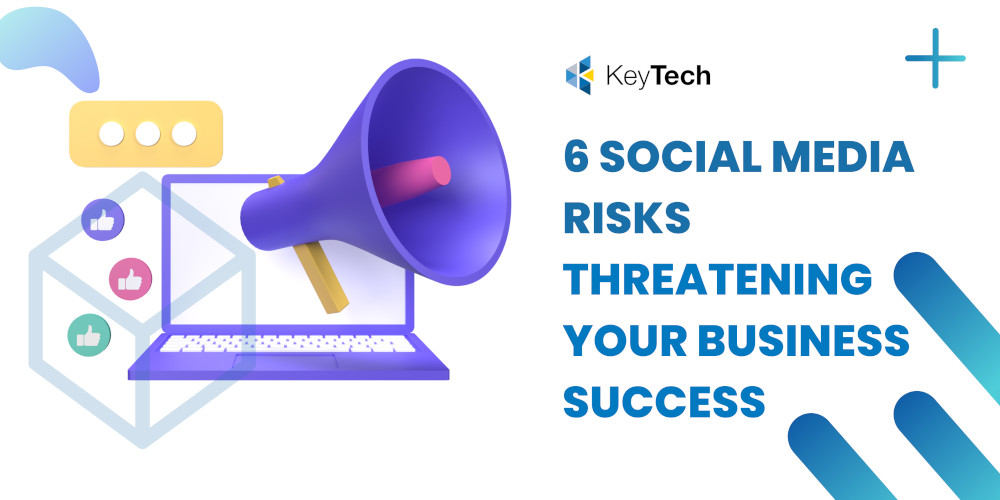
by Renee Bean | May 23, 2024 | Business Management, Cybersecurity, Disaster Recovery, I.T., IT Support Brisbane, Services
Picture this: Your business is thriving, operations are smooth, and everything seems perfect. But then, disaster strikes – a cyber attack, a hardware failure, or even a simple human error wipes out your critical data in an instant. It’s a nightmare scenario, but it’s one that can be prevented with a simple yet powerful solution: regular backups. In this article, we’ll dive into the world of data protection and uncover why regular backups are the unsung heroes of business resilience.
Understanding Regular Backups
Regular backups serve as a critical key component of the Essential 8 framework, providing a foundational pillar for resilience in the face of cyberthreats and data loss. Regular Backups involve creating copies of your critical data and storing them in a separate location from your primary system. These backups serve as a safety net, allowing you to restore your data in the event of data loss or system failure. By maintaining up-to-date backups, you can minimise downtime, protect against data loss, and ensure business continuity.
Why Regular Backups Matter |
| 1 | Protection Against Data LossData loss can occur due to various reasons, including hardware failures, cyber-attacks, and accidental deletion. Regular backups provide a reliable means of recovering lost data and minimising the impact of such incidents on your business operations. |
| 2 | Resilience Against RansomwareRansomware attacks can encrypt your data and render it inaccessible until a ransom is paid. With regular backups, you can restore your data from a clean backup, avoiding the need to pay the ransom and mitigating the impact of the attack on your business. |
| 3 | Compliance RequirementsMany industries have regulatory requirements regarding data protection and retention. Regular backups help ensure compliance with these regulations by providing a means of preserving data integrity and availability. |

How to Implement Regular Backups |
| 1 | Identify Critical Data:Start by identifying the data that is essential for your business operations. This may include customer records, financial data, intellectual property, and other sensitive information. |
| 2 | Choose Backup SolutionsSelect backup solutions that meet your business needs and budget. Options include on-site backups, cloud-based backups, and hybrid solutions that combine both approaches. Consider factors such as data volume, recovery time objectives, and security features when choosing a backup solution. |
| 3 | Establish Backup ScheduleDetermine how frequently you need to perform backups based on your data recovery objectives and the frequency of data changes. For critical data, daily or real-time backups may be necessary, while less critical data may require less frequent backups. |
| 4 | Test Backups RegularlyRegularly test your backups to ensure they are functioning correctly and that you can successfully restore data when needed. Conducting backup tests helps identify any issues or gaps in your backup strategy and allows you to address them proactively. |
| 5 | Automate Backup ProcessesWhenever possible, automate backup processes to minimise manual intervention and ensure consistency. Use backup software or tools that offer scheduling, monitoring, and reporting features to streamline the backup process and ensure data integrity. |
Regular backups are a fundamental component of a robust cybersecurity strategy, providing essential protection against data loss, ransomware attacks, and regulatory non-compliance. By implementing regular backups and following best practices, you can safeguard your business’s critical data and ensure its resilience in the face of unforeseen events. Don’t wait until it’s too late – start backing up your data regularly today to protect your business’s future. For expert guidance and support in implementing regular backups for your business, contact KeyTech. We specialise in cybersecurity solutions tailored to meet the unique needs of small businesses, helping you safeguard your data and ensure business continuity.

by Renee Bean | May 20, 2024 | Cybersecurity, I.T., Microsoft
In an age where healthcare organisations manage vast amounts of sensitive patient data, ensuring robust data security and regulatory compliance is paramount. With the evolving landscape of cybersecurity threats and stringent regulatory requirements, healthcare providers need comprehensive solutions to safeguard patient information and maintain compliance with regulations such as the Privacy Act. Microsoft 365 (M365) Premium offers a suite of security features tailored to the unique needs of the healthcare sector, providing a solid foundation for data protection and compliance.
Understanding Healthcare Regulations
Under the Privacy Act, all organisations that provide health services and hold health information are subject to stringent regulations governing the collection and handling of personal and health information. A ‘health service’ encompasses various activities related to assessing, maintaining, and improving physical or psychological health, including diagnostic and treatment services. Examples of organisations providing health services range from traditional healthcare providers to complementary therapists, childcare centres, and private schools.
Importance of Data Security in Healthcare
The sensitive nature of patient data underscores the critical importance of data security in the healthcare sector. Healthcare organisations face many challenges in ensuring the confidentiality, integrity, and availability of patient information, including unauthorised access, data breaches, and compliance requirements. Maintaining compliance with healthcare regulations is essential for protecting patient privacy and maintaining trust with stakeholders.
Leveraging M365 Premium for Healthcare Security
Microsoft 365 Premium offers a comprehensive suite of security features designed to address the unique security needs of healthcare organisations. Advanced threat protection, data loss prevention, encryption, and identity and access management are among the key security capabilities offered by M365 Premium. These features help healthcare organisations mitigate security risks, safeguard patient data, and maintain compliance with regulatory requirements.
Ensuring Compliance and Data Protection
Healthcare organisations can leverage Microsoft 365 Premium to achieve compliance with healthcare regulations by implementing robust security policies, conducting regular staff training on data handling practices, and performing audits and assessments to identify and address security gaps. The Office of the Australian Information Commissioner (OAIC) plays a crucial role in regulating the handling of health information and healthcare identifiers, ensuring compliance with privacy and data protection laws.
In an era of heightened cybersecurity threats and regulatory scrutiny, Microsoft 365 Premium emerges as a powerful tool for strengthening healthcare data security and ensuring regulatory compliance. By harnessing the advanced security features offered by M365 Premium, healthcare organisations can enhance data protection, maintain patient privacy, and build trust with stakeholders. As healthcare continues to evolve, investing in robust data security measures is essential for safeguarding patient information and maintaining compliance with regulatory requirements.

by Renee Bean | May 15, 2024 | Cybersecurity, Disaster Recovery, I.T., IT Support Brisbane, Microsoft, Services
In a world where every click and keystroke can pose a potential risk, fortifying your business against cyber threats is no longer a choice — it’s a necessity. Picture this: your business is like a fortress, with its gates constantly besieged by unseen digital adversaries. Now, imagine if you could reinforce those gates, making them impervious to attack. That’s precisely what User Application Hardening does—it strengthens the armour of your business applications, turning them into impenetrable bastions of security. Let’s delve into this crucial aspect of cybersecurity, unravelling its secrets and uncovering how it can safeguard your business from the ever-looming threat of cybercrime.
What is User Application Hardening?
The purpose of User Application Hardening is to create multiple layers of security to make it increasingly difficult for bad actors to compromise a user’s device through a user-based application. It’s like building a fortress with layers of defence—if one layer is breached, there are multiple security measures in place to thwart any further intrusion attempts. This approach ensures that even if one security measure is bypassed, others remain intact to safeguard the organisation’s computer systems from potential threats.
Why is User Application Hardening Important? |
| 1 | Minimising VulnerabilitiesBy hardening your applications, you can minimise the potential vulnerabilities that attackers could exploit to gain unauthorised access to your systems. |
| 2 | Protecting Against ExploitsCybercriminals often target known vulnerabilities in popular applications. By hardening these applications, you can protect your business from falling victim to such exploits. |
| 3 | Enhancing Data SecurityHardening your applications helps safeguard sensitive business data from unauthorised access, ensuring compliance with regulatory requirements and maintaining customer trust. |
How Can You Implement User Application Hardening? |
| 1 | Regular UpdatesEnsure that all applications are kept up-to-date with the latest versions, as updates often include patches for known security vulnerabilities. |
| 2 | Configuration ManagementConfigure application settings to minimise security risks and disable unnecessary features that could pose a threat. |
| 3 | Endpoint ProtectionImplement endpoint protection solutions that include application control features to restrict the execution of unauthorised or untrusted applications. |
| 4 | Employee TrainingEducate your employees about the importance of application security and provide guidelines for safe application usage. |

How KeyTech Can Assist You
At KeyTech, we understand the challenges that small businesses face in today’s digital environment. Our team of cybersecurity experts specialises in helping businesses like yours implement robust security measures, including User Application Hardening. From conducting security assessments to implementing advanced endpoint protection solutions, we are here to support you every step of the way.
Do not wait until it’s too late to secure your business. Contact KeyTech today to learn how we can help you strengthen your cyber defences and protect your valuable assets.
By prioritising User Application Hardening as part of the Essential 8 framework, you can safeguard your business against evolving cyber threats and ensure long-term success in today’s digital world.

by Renee Bean | May 7, 2024 | Cybersecurity, I.T.
Running a small business comes with its own set of challenges, especially when it comes to cybersecurity. One aspect that is often overlooked is the use of Microsoft Office macros. While macros can streamline tasks and improve efficiency, they can also pose security risks if not managed properly. In this article, we will demystify Microsoft Office macros and provide practical tips for small business owners to restrict their usage effectively, aligning with the Essential 8 framework for comprehensive cybersecurity.
Understanding Microsoft Office Macros
First things first, let’s define what Microsoft Office macros are. In simple terms, macros are small programs or scripts that automate repetitive tasks within Microsoft Office applications such as Word, Excel, and PowerPoint. They can be incredibly useful for automating complex processes, but they can also be exploited by cybercriminals to deliver malware or perform malicious actions on your computer.
Why Restrict Microsoft Office Macros?
Restricting the use of Microsoft Office macros is essential for protecting your business from potential cyber threats. Here’s why:
Mitigating Malware Risks
Cybercriminals often use malicious macros embedded in Office documents to infect computers with malware. By restricting macros, you can significantly reduce the risk of malware infections and data breaches.
Preventing Unauthorised Actions
Macros have the potential to execute commands that could compromise the security of your systems or lead to data loss. Restricting their usage helps prevent unauthorised actions and maintains the integrity of your business data.
Ensuring Compliance
Depending on your industry, you may be subject to regulatory requirements that mandate strict control over macros and other potential security vulnerabilities. Restricting macros helps ensure compliance with these regulations and standards.
Let’s consider a scenario involving a malicious macro..
Imagine you receive an email from what appears to be a trusted source, perhaps a vendor or a colleague. The email contains an attached Microsoft Excel spreadsheet that supposedly contains important financial data. Upon opening the spreadsheet, you’re prompted to enable macros to view the content properly.
Unbeknownst to you, the macro embedded within the spreadsheet is malicious. Once enabled, it executes a series of commands that download and install malware onto your computer, giving cybercriminals unauthorised access to your system. This malware could then steal sensitive information, such as login credentials or financial data, or even encrypt your files and demand a ransom for their release.
In this example, the innocent-looking macro becomes a vehicle for cybercrime, exploiting the trust of the recipient to infiltrate their system and wreak havoc. This highlights the importance of restricting the use of macros and exercising caution when interacting with email attachments, even if they appear to be from trusted sources.
By implementing restrictions on Microsoft Office macros, you can mitigate the risk of falling victim to such malicious attacks and protect your business’s sensitive data and systems.
Best Practices for Restricting Microsoft Office Macros
Now that you understand the importance of restricting Microsoft Office macros, here are some best practices to help you implement effective controls:
Enable Macro Security Settings
Take advantage of built-in macro security settings in Microsoft Office applications. Set the security level to “Disable all macros except digitally signed macros” to prevent all macros from running except those that are signed by a trusted source.
Educate Employees
Train your employees on the risks associated with macros and the importance of exercising caution when opening Office documents from unknown or untrusted sources. Encourage them to verify the legitimacy of documents before enabling macros.
Implement Application Whitelisting
Consider implementing application whitelisting to control which macros can run on your systems. Create a whitelist of trusted macros and block all others from executing, reducing the attack surface for cyber threats.
Regularly Update Software
Keep your Microsoft Office applications and operating systems up to date with the latest security patches and updates. Vulnerabilities in outdated software can be exploited by cybercriminals to bypass macro restrictions and compromise your systems.
Monitor and Audit Macro Usage
Implement monitoring and auditing mechanisms to track macro usage within your organisation. Regularly review logs and reports for any suspicious activity and take appropriate action to mitigate potential risks.
By following these best practices, small business owners can effectively restrict the usage of Microsoft Office macros and enhance their cybersecurity posture. Remember, proactive measures are key to protecting your business from evolving cyber threats.
For expert assistance in implementing macro restrictions and other cybersecurity measures, reach out to KeyTech today. Our team of professionals is dedicated to helping small businesses like yours stay secure in an increasingly digital world.

by Renee Bean | Apr 26, 2024 | Business Marketing, Cybersecurity, Digital Marketing, Services
Welcome to the digital age, where social media isn’t just a means of staying connected—it’s a goldmine for businesses looking to engage with customers, boost brand visibility, and drive growth. Platforms like Facebook, Instagram, TikTok, and LinkedIn offer endless opportunities for businesses of all sizes to shine. But hold on tight, because amidst the sea of likes and shares, there are some sneaky dangers lurking beneath the surface. Let’s take a closer look at the risks of social media misuse and how you can safeguard your business from its pitfalls.
Understanding the Risks
1. Protecting Your Brand Reputation:
Your brand’s reputation is priceless. However, social media misuse can put it at risk in a number of ways:
- Negative Feedback Fallout: Ignoring or responding unprofessionally to negative comments and reviews can damage your brand’s image.
- Steer Clear of Inappropriate Content: Sharing or engaging with offensive material can drive away your audience and erode trust.
- The Communication Conundrum: Misinformation spreads like wildfire on social media, leading to confusion and undermining your credibility.
2. Navigating Legal Minefields:
One wrong move on social media could land your business in legal trouble:
- Copyright Concerns: Sharing copyrighted material without permission can result in costly legal battles.
- Defamation Dilemmas: Posting false information about competitors or individuals could lead to defamation lawsuits.
- Privacy Predicaments: Mishandling customer data or sharing private information could result in regulatory fines and loss of trust.
3. Keeping Your Customers Close:
Social media missteps can drive your customers away faster than you can say “unfollow”:
- Offensive Oversights: Posting controversial content can alienate customers who no longer want to associate with your brand.
- Unprofessionalism Alert: Engaging in online arguments or behaving unprofessionally can turn potential customers off.
- Trust Troubles: Mishandling customer data or being associated with online scams can breed mistrust among your audience.
4. Employee Engagement Etiquette:
Your employees are your brand ambassadors, but social media misuse can dampen their spirits:
- Public Criticism Consequences: Publicly criticising employees or leaking sensitive company information can harm morale and productivity.\
- Stress Signals: Negative publicity can take a toll on your team’s mental well-being, affecting their performance.
5. Avoiding Resource Drain:
Ineffective social media efforts can drain your resources faster than you can say “budget”:
- Campaign Caution: Spending time and money on ineffective campaigns can hurt your bottom line.
- Strategy Slip-Ups: Hiring staff or agencies without a clear social media strategy can lead to wasted resources.
6. Spotting Fake Profiles:
Be wary of fake profiles and job postings on platforms like LinkedIn, which cybercriminals use to gather personal information for identity theft scams. Always verify the authenticity of contacts and job listings before sharing personal details.
Prevention is Key
To shield your business from the dangers of social media misuse, consider implementing these strategies:
Craft a Clear Social Media Policy:
Lay down the ground rules for your employees regarding acceptable social media behaviour.
Stay Vigilant:
Keep a close eye on your social media channels and swiftly address any inappropriate content.
Educate and Empower:
Educate your employees on responsible social media usage and its impact on the company’s reputation.
Plan for the Worst:
Have a crisis response plan in place to tackle any social media crises that may arise.
Securing Your Digital Presence
Every social post and comment can make or break your business. While social media offers incredible opportunities for growth, it also comes with its fair share of risks. By implementing best practices, educating your team, and staying vigilant, you can navigate the complex world of social media and protect your business from harm. Remember, every click counts—make sure yours are leading your business in the right direction.
Curious about enhancing your business’s overall cybersecurity posture?
Delve into our in-depth guide on ‘Cybersecurity Audits: Safeguarding Your Business‘ to discover practical tips and expert advice for fortifying your digital defences. Take proactive steps to protect your business from cyber threats in today’s interconnected world.

by Renee Bean | Apr 9, 2024 | Cybersecurity
Running a business in the digital age can be exhilarating, but it also comes with its share of challenges. Cyber threats loom large, posing risks of data breaches, operational disruptions, and reputational damage. You certainly don’t want your business to fall victim to such malicious attacks, right? That’s where securing your systems with various methods becomes crucial. Among these methods, application control stands out as a simple yet effective way to safeguard your devices and networks from unwanted software. In this article, we’ll delve into what application control entails, why it holds immense importance for your business, and how it aligns with the Essential 8 framework.
Understanding Application Control
Imagine your business’s digital environment as a bustling city, with various applications bustling about like pedestrians on the streets. Now, picture application control as the vigilant traffic officer directing which applications can move freely and which ones need to be stopped at the gate. Essentially, application control allows you to decide which software is allowed to run on your systems and which ones are barred entry.
So, why does this matter for your business? Well, think of it this way: just as you wouldn’t want uninvited guests causing chaos at your office party, you don’t want unapproved software wreaking havoc on your digital systems. By implementing application control, you’re essentially placing a security checkpoint at the entrance of your digital world, ensuring only trusted applications gain access.
Why Application Control Matters
Now, let’s break down why application control is such a vital aspect of cybersecurity for your business:
- Protection Against Malicious Threats: Malware, ransomware, and other malicious software can pose significant risks to your business’s digital assets. Application control acts as a shield, preventing these threats from infiltrating your systems and wreaking havoc.
- Prevention of Unapproved Software: Unauthorised software installations can introduce vulnerabilities and compliance issues to your business. With application control in place, you can restrict the installation and execution of unapproved software, ensuring that only authorised applications are permitted to run.
- Compliance with Essential 8 Framework: The Essential 8 framework, developed by the Australian Cyber Security Centre, outlines key strategies for mitigating cybersecurity risks. Application control is one of these strategies, emphasising the importance of managing the execution of applications to enhance security.
Implementing Application Control
Now that you understand the significance of application control, let’s explore how you can implement it in your business:
- Conduct an Application Inventory: Start by identifying all the applications currently running on your systems. Determine which ones are essential for your business operations and which ones may pose security risks.
- Establish Whitelisting Policies: Create a whitelist of approved applications that are allowed to run within your network. Only applications on this whitelist should be permitted to execute, while all others are blocked by default.
- Regularly Update and Patch Software: Keep your approved applications up to date with the latest patches and security updates. Regular software updates help address vulnerabilities and strengthen your overall security posture.
- Educate Your Employees: Train your staff on the importance of application control and how to recognise potential security threats. Encourage them to report any suspicious activity immediately to prevent security breaches.
As a small business owner, safeguarding your digital assets should be a top priority. Application control, as part of the Essential 8 framework, offers a simple yet effective way to enhance your cybersecurity defences. By managing the execution of applications and preventing unauthorised software installations, you can minimise security risks and protect your business from potential threats.
Remember, cyber threats are constantly evolving, so staying vigilant and proactive is key to keeping your business safe and secure. If you have any questions or need assistance implementing application control in your business, don’t hesitate to reach out to us at KeyTech. Our expert team can provide guidance and support to help you keep your data and systems secure, using strategies such as application control.








